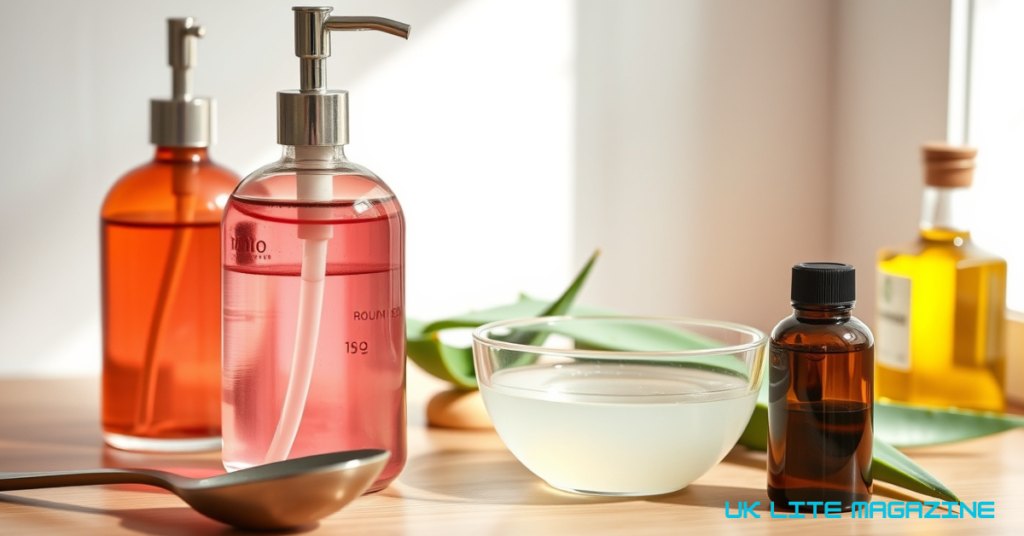Keeping your hands clean is essential, but store-bought soaps can sometimes be harsh on your skin or contain unnecessary chemicals. Making your own hand soap at home is not only quick and easy but also lets you customize it to suit your preferences and skin needs. In this article, we’ll guide you step-by-step through a simple recipe for homemade hand soap that you can whip up in just minutes.
Benefits of Homemade Hand Soap
Before diving into the recipe, let’s look at why you should consider making hand soap at home:
- Cost-Effective: The ingredients for homemade soap are affordable and can last for multiple batches.
- Customizable: Choose your favorite scents, essential oils, and ingredients to suit your skin.
- Eco-Friendly: Reduce plastic waste by reusing soap dispensers.
- Gentle on Skin: Avoid harsh chemicals that can dry out your hands.
Ingredients You’ll Need
Here’s what you need to get started:
- Liquid Castile Soap (1/2 cup): A natural, plant-based soap that forms the base of your hand soap.
- Distilled Water (1/2 cup): Helps dilute the soap for a smoother texture.
- Essential Oils (10-15 drops): Choose oils like lavender, tea tree, or citrus for fragrance and added benefits.
- Carrier Oil (1-2 teaspoons): Olive oil, almond oil, or jojoba oil can keep your hands moisturized.
- Soap Dispenser: Reuse an old dispenser or buy one designed for foaming soap if you prefer.
Optional Add-Ins:
- Aloe Vera Gel (1 tablespoon): Soothes and hydrates the skin.
- Vitamin E Oil (a few drops): Acts as a natural preservative and skin conditioner.
Step-by-Step Recipe
Follow these simple steps to create your own homemade hand soap:
Step 1: Gather Your Ingredients
Make sure all your ingredients and tools are ready. Clean your soap dispenser to ensure there’s no residue that could affect your mixture.
Step 2: Mix the Base Ingredients
In a mixing bowl, combine the liquid Castile soap and distilled water in equal parts. Stir gently to avoid creating foam.
Step 3: Add Essential Oils
Choose your favorite essential oils and add about 10-15 drops to the mixture. For example, lavender and tea tree oils are antibacterial, while citrus oils provide a fresh scent.
Step 4: Add Carrier Oil
Add 1-2 teaspoons of a carrier oil like jojoba or almond oil to keep your hands moisturized.
Step 5: Optional Additions
If you’d like extra benefits, stir in aloe vera gel or a few drops of vitamin E oil.
Step 6: Transfer to Dispenser
Carefully pour the mixture into your soap dispenser. If you’re using a foaming dispenser, leave a little space at the top for the pump to work properly.
Step 7: Test and Adjust
Pump a little soap to test its consistency. If it feels too thick, add more water. If it’s too runny, add more Castile soap.
Tips for the Perfect Homemade Hand Soap
- Use high-quality essential oils for the best scent and skin benefits.
- Store the soap in a cool, dry place to maintain its quality.
- Shake the dispenser gently before each use to mix the ingredients.
Why This Recipe Works
This homemade soap recipe combines the cleaning power of Castile soap with the moisturizing properties of carrier oils. The essential oils add a personal touch while offering antibacterial and aromatherapeutic benefits. The result is a gentle, effective hand soap that you can make in minutes.
Conclusion
Making your own hand soap at home is not only easy but also rewarding. You can customize it to suit your preferences, save money, and reduce waste. With this simple recipe, you’ll always have a gentle, natural soap on hand to keep your skin clean and soft. So, grab your ingredients and give it a try — your hands will thank you!
Frequently Asked Questions (FAQs)
1. How long does homemade hand soap last?
Homemade hand soap can last up to 2-3 months if stored in a clean dispenser and kept in a cool, dry place.
2. Can I use tap water instead of distilled water?
While tap water is fine for short-term use, distilled water prevents the growth of bacteria and extends the shelf life of your soap.
3. What if I don’t have Castile soap?
You can use any unscented liquid soap as a substitute, but Castile soap is preferred for its natural and gentle properties.
4. Are essential oils necessary?
No, but they add fragrance and beneficial properties to your soap. If you prefer unscented soap, you can skip this step.
5. Can this recipe be used for foaming soap dispensers?
Yes! Simply ensure you use a foaming dispenser and dilute the mixture slightly more with water if needed.

